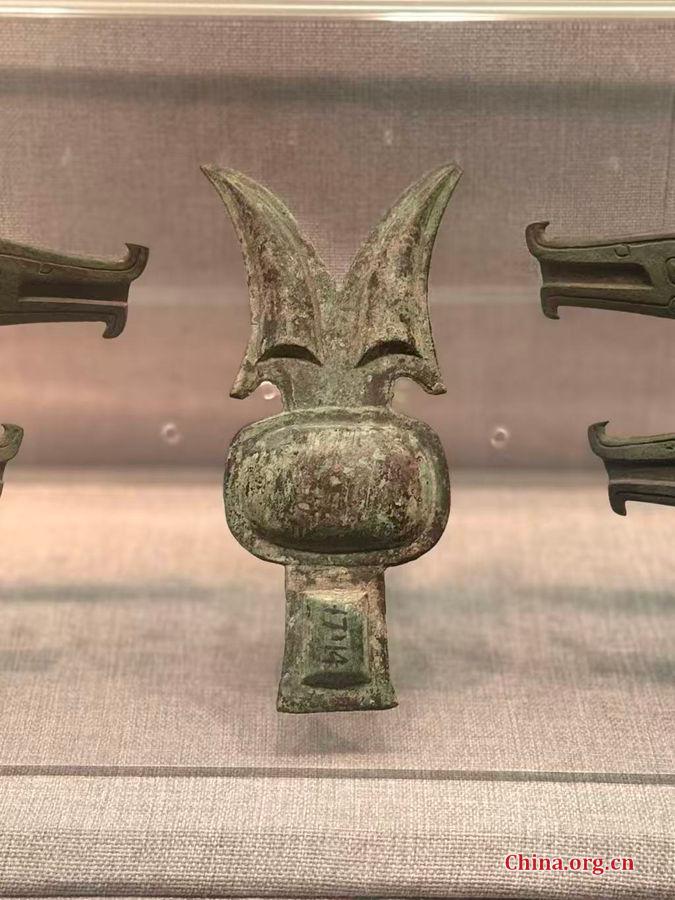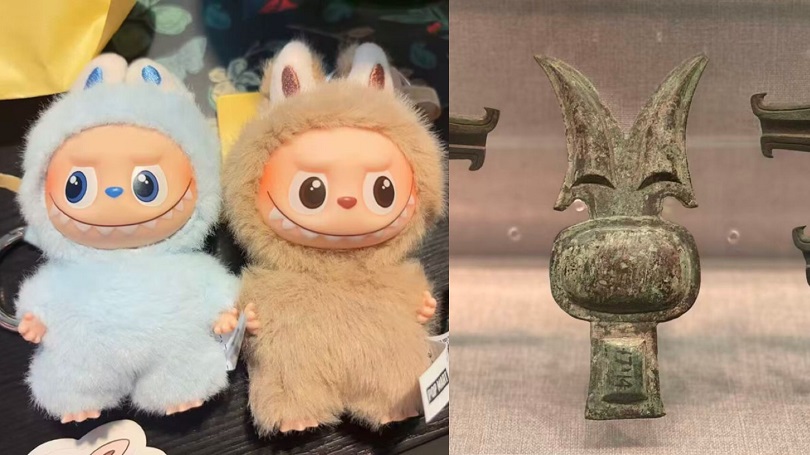Chinese culture today is being expressed through both its trendiest designs and its ancient treasures. This dual storytelling is embodied by the modern designer toy Labubu and a historical bronze danglu artifact.
Labubu, a popular monster-themed doll at the forefront of the "guochao" (國潮 in Chinese) or "China chic" phenomenon, represents the creativity of contemporary Chinese brands. Its immense global recognition can be attributed to its innovative marketing, including the anticipation from blind box selection as well as celebrity endorsements. In addition, a proper translation of the doll's background is also an important factor.
On June 20, a BBC article titled "Adorable or just weird? How Labubu dolls conquered the world" described the toy as "both a fictional character and a brand." It added that "The vinyl faces are attached to plush bodies, and come with a signature look – pointy ears, big eyes and a mischievous grin showing exactly nine teeth. A curious yet divided internet can't seem to decide if they are adorable or bizarre."

Toys themed on Labubu, a popular furry doll from Chinese toy company Pop Mart, are pictured in Beijing, China, Sept. 1, 2025. [Photo by Huang Shan/China.org.cn]
The article also noted that Labubu's retailer defines its character as "kind-hearted and always wants to help, but often accidentally achieves the opposite."This description or translation could likewise apply to the characters of many people around the world, thereby laying a foundation for creating empathy between people.
On Nov. 8, a report by the Academy of Contemporary China and World Studies validated this influence at the World Internet Conference Wuzhen Summit, naming Labubu "China's most recognizable and influential pop culture intellectual property in the eyes of the world." Some Labubu fans agree that the doll provides them sought-after emotional value at an accessible price, and many identify with the doll being kind-hearted and wanting to help, but accidentally achieving the opposite.
An intriguing development recently linked Labubu and an ancient Chinese bronze. Fans of Labubu discovered a striking resemblance between the doll and a bronze danglu— a kind of ancient Chinese horse harness ornament — on display in a museum. Their observation quickly went viral online, causing crowds of enthusiasts to rush to museums to photograph and compare the two figures. The craze ignited a new wave of public interest in Chinese bronzes and museum visits.

A bronze danglu from the Western Zhou dynasty (1046-771 B.C.) on display at Luoyang Museum, Luoyang, Henan province, July 4, 2025. [Photo by Zhou Jing/China.org.cn]
The bronze danglu is a highly significant ritual horse ornament with a history of over 2,000 years. This artifact, which symbolized the owner's high social status, the horse's superior quality and highly-developed ancient bronze craftsmanship, is a tangible link to China's ancient civilization, demanding a professional introductory translation of its role and history.
For the bronze danglu, precise and professional translation with additional context describing its historical and archaeological significance might be considered proper. Meanwhile, for Labubu, the challenge in translation might be how to convey the essence of China chic, or the dynamic fusion of modern pop-culture trends with traditional Chinese heritage. The choice of different translation approaches can provide various perspectives for global audiences to learn about and understand the stories of relics and the modern trends taking place among vibrant cultural innovation.


 Share:
Share: 




 京公網安備 11010802027341號
京公網安備 11010802027341號